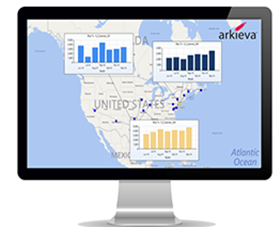
A business case always consists of both qualitative and quantitative arguments. Typical qualitative objectives in an S&OP project are improving the forecast accuracy, better communication between departments and a boost to the planner’s value add. But, if you want to internally justify your project, a solid quantification of your ROI (Return on Investment) is an absolute door opener. Nevertheless, it strikes me that many supply chain people can’t express their own added value quantitatively in an adequate manner. Do you know what your impact is on the annual report of your organization? And do you use and interpret the financial figures to convince C-level management about your supply chain projects?
Since we’ve noticed at Solventure that many of our customers are so overwhelmed with operational issues and that they don’t have the time or routine to calculate the ROI for their S&OP project, we’ve developed the ROI calculator. It’s a handy instrument that allows us to make the quantitative ROI calculation in just half a day. As a basis we use the input of the annual reports of your organization from the past three years.
When calculating the ROI for an S&OP project, we take into account several categories whereby we group quantitative benefits. Typically, we will scroll together through the list of categories and consider which will be impacted the most, given the scope of the project. Reasonable, conservative assumptions are made. We also bear in mind that there could be other projects going on that will impact the ROI. To make it concrete: assume that there’s an SAP tool being rolled out within your organization with the main objective of reducing working capital. Next to this, you want to introduce a stock optimization project. If the main objective for that project is also working capital reduction it will be very difficult to prove the value add of your project. How will you prove that your project leads to a specific percentage increase in working capital? The important thing, then, is to avoid a double benefit calculation.
Working capital reduction is one of the most common reasons, aside from the total COGS (Cost of Goods Sold), for starting an S&OP trajectory. Portfolio profitability, too, can be a suitable business angle: e.g. by giving priority to products with a high margin at times of limited capacity or not using the last available production capacity because of a negative margin. Such considerations allow the supply chain organization to reason not only from a volume perspective, but also from the profitability of the organization. In itself something that every CEO dreams of, right?
Other factors, however, sometimes fairly classical reasons, are less relevant when building your business case. Think, for example, of improved planning productivity. Indeed, you can save some working hours of a production line planner by implementing an S&OP tool, but considering how much a planner costs, that yields little return. Or, in other words: saving time on the planners' side can’t possibly be the main reason to roll out an S&OP tool.
A business case for a supply chain project is relatively easy to make. The supply chain organization functions so cross-departmentally that small improvements can have a big return. Compare that, for example, to a project for improving the input of invoices. The latter will have a much more limited scope and thus limited impact. However, in the case of invoice scanning, the improvements can be directly attributed to a specific project. And that’s precisely where the difficulty is with S&OP projects. S&OP context is so broad that it is difficult to measure the full impact of an S&OP implementation. It is also harder to defend, towards the business, because it requires a lot of insights into the supply chain processes.
Building the business case for your S&OP project is certainly not some kind of ‘holy grail’, however it is a necessary exercise to fulfill. It will help you to find the right arguments to convince the business but, even more importantly, it will also support you to measure your realized benefits.
And if you reap the advantages that you have put forward, do stand up and take a bow. Belgians are typically too modest. When it comes to showcasing, we really could learn something from our international supply chain colleagues. Did you ever read a CV of an American Supply Chain Manager? Usually, they will mention how many million dollars they have just saved or realized for their organization. And that is what it all comes down to: the supply chain organization should prove its value add, whether it is in a project on transport optimization or in an S&OP project.
Are you now primed to quantify the business case of your S&OP project, based on my blog story? Let me know. I am more than happy to help you determine the ROI calculation for your specific project.
These Stories on Executive S&OP